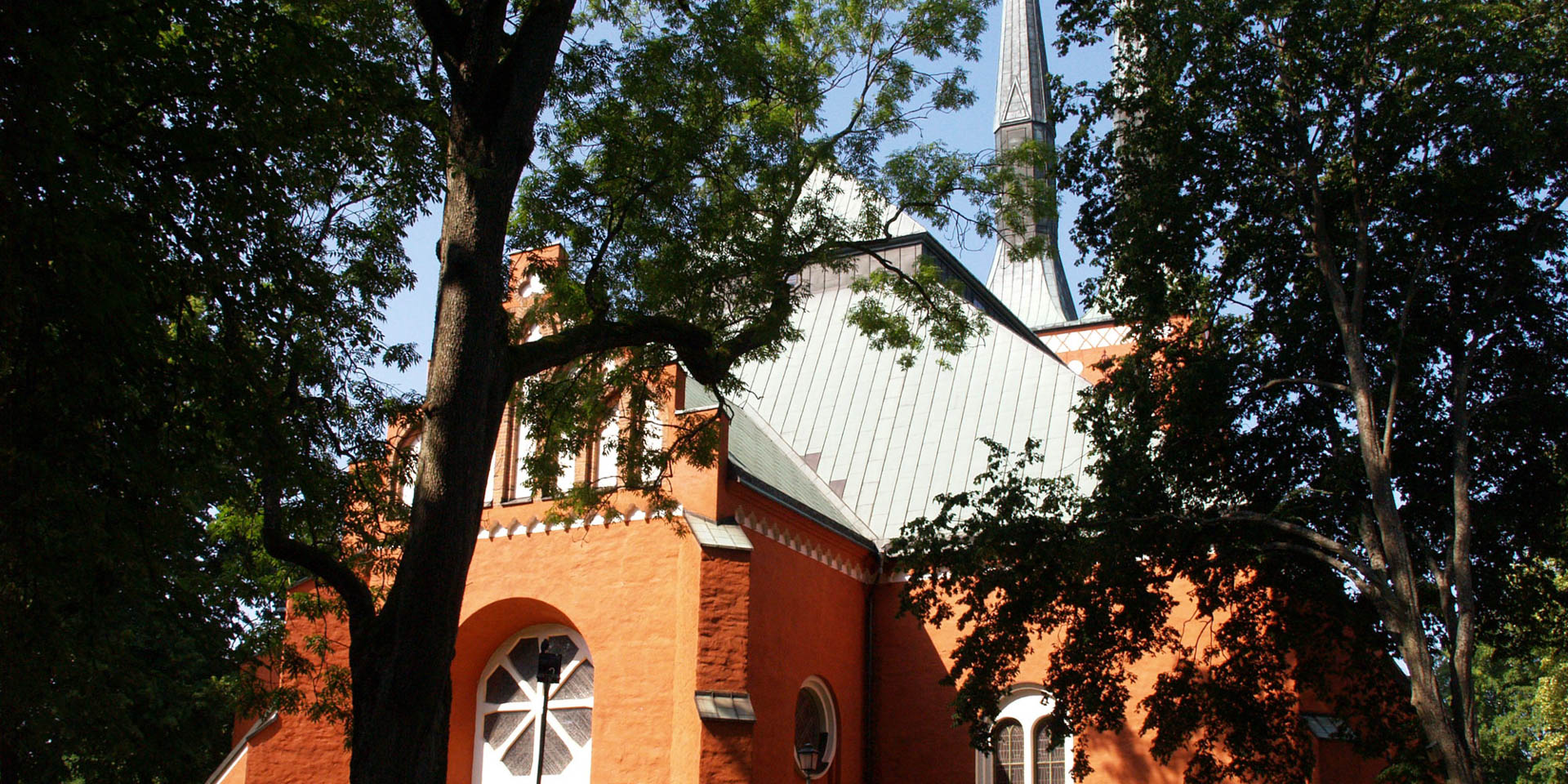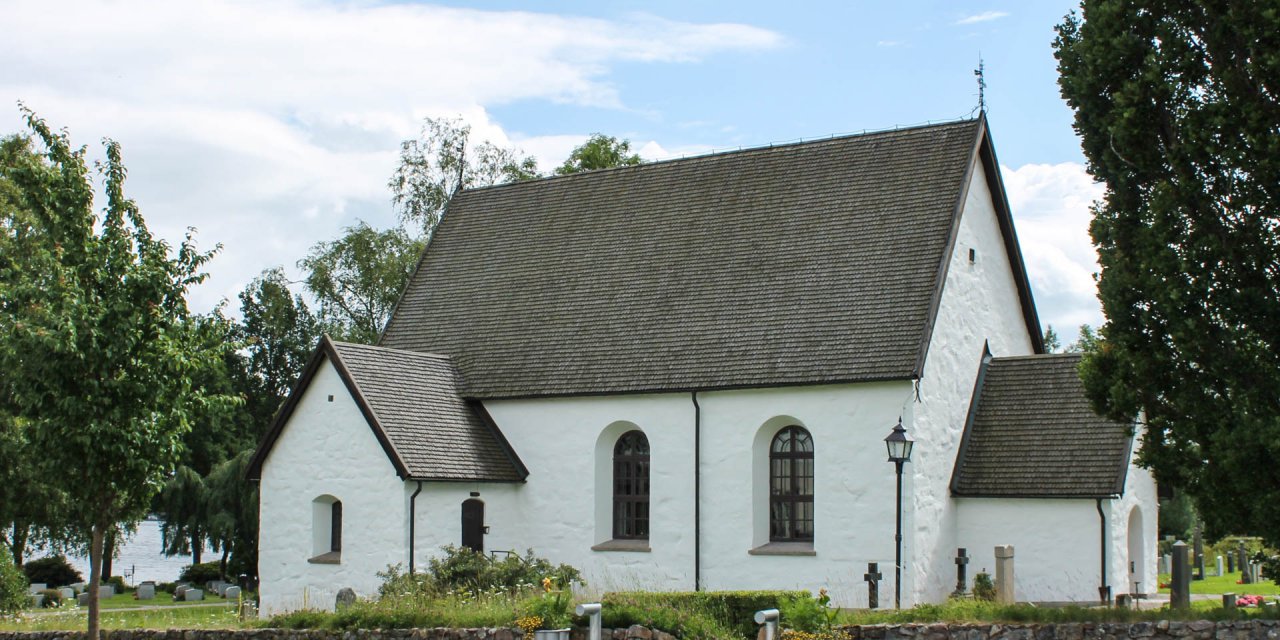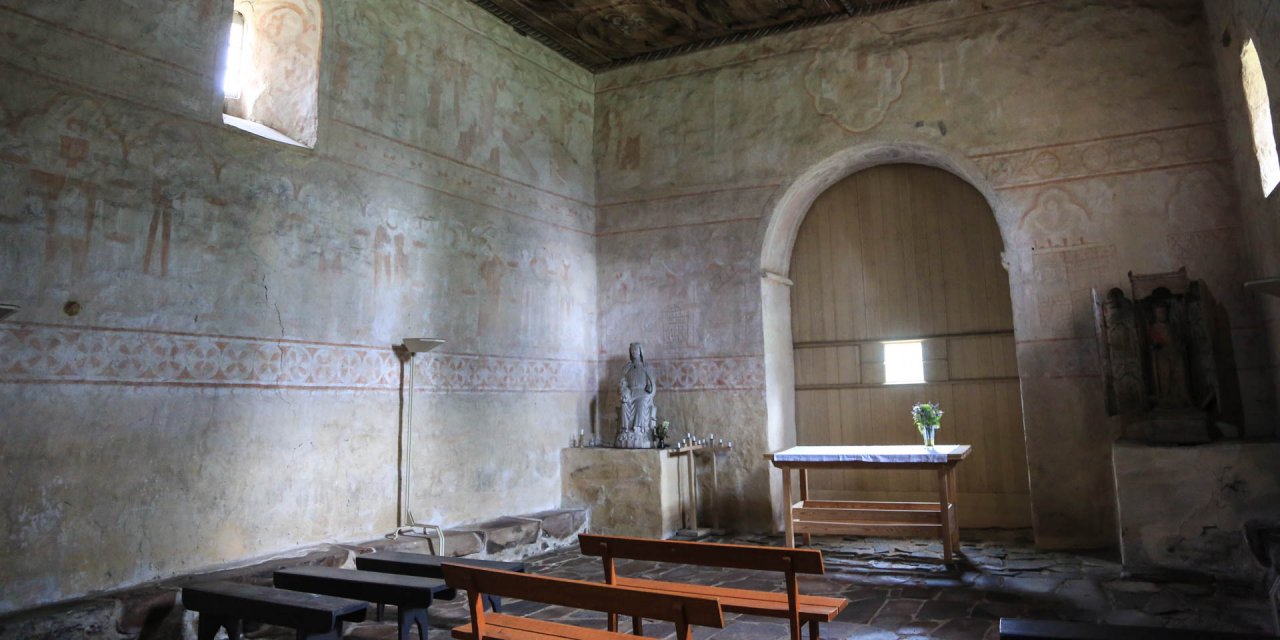

Växjö Domkyrka
Cathedral in Växjö
Växjö Domkyrka, the cathedral in Växjö is the main church of the Diocese of Växjö and is located on the edge of the modern city center of Växjö. The present ground plan of the church with its striking double tower spire dates from the 15th century, but some fragments are already from the 12th century.
The first church on the site of today's Växjö Domkyrka was a small wooden church in the 11th century. According to legend, established on the initiative of the missionary and later canonized Saint Sigfrid. The diocese of Växjö was founded around 1170 and the first cathedral for the new bishops' seat was built.
This first cathedral was built of natural stone, had a Romanesque ground plan with only one nave, a narrow chancel with a semicircular apse and a mighty tower. Parts of the old foundations and some pillars in today's main nave, as well as the masonry in the lower part of the church tower remained until today.
In the 15th century, the cathedral was rebuilt and got the ground plan which exists today. The Romanesque church was transformed into a three-aisled Gothic hall church and the broad church tower was given two high, narrow tower spiers.
In the course of the following centuries, the cathedral was twice ransacked by Danish troops, and several times damaged by fires. After the last great fire on 29th May 1740, triggered by lightning, it took about thirty years to rebuild the church.
In 1850, the cathedral was given the appearance of a late medieval Scanian church with stepped gables. Only the last restoration at the end of the 1950s restored the cathedral's appearance from the 15th century.
The oldest remnants of the past date from the 16th century – fragments of limestone paintings in a side chapel. Followed by a tombstone from 1617 as well as two cast-iron grave plates from the 18th century. A large "S" on a floor plate in the middle of the main nave marks the position of the altar of the 12th century cathedral, which was probably the tomb of Saint Sigfrid.
The baptismal cup in the shape of an ark of blue glass was created by glass artist Göran Wärff. The baptismal font and the pulpit of black granite as well as the high altar of polished limestone are works by the well-known stage designer and glass artist Jan Brazda.
Four sculptures in the cathedral, depicting Jesus, Mary and the apostles Peter and Paul were created by the sculptress Eva Spångberg. Just behind the entrance is the much-visited tree of knowledge, a light installation of glass and iron, which was created as a collaboration work of the glass artist Erik Höglund and the blacksmith Lars Larsson.
The greatest attention is attracted by the altarpiece, created in 2002 by the famous glass artist Bertil Vallien. Following the example of medieval triptychs it consists of a body with two movable wing parts – in this case made of glass. The three parts representing the earth, the underworld and the sky, the center is being formed by the suffering Christ on the cross.
Växjö Domkyrka: Opening hours
Opening hours
Monday – Sunday: 9:00 – 18:00
Last update: 06/2022 | Errors and omissions excepted.



